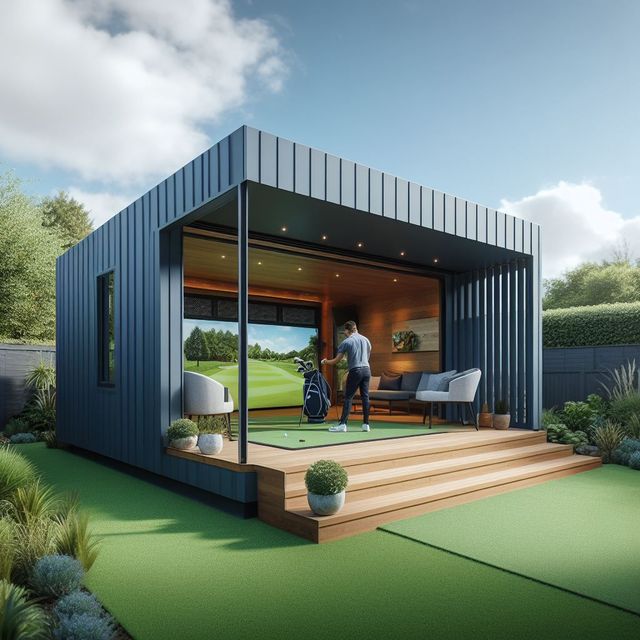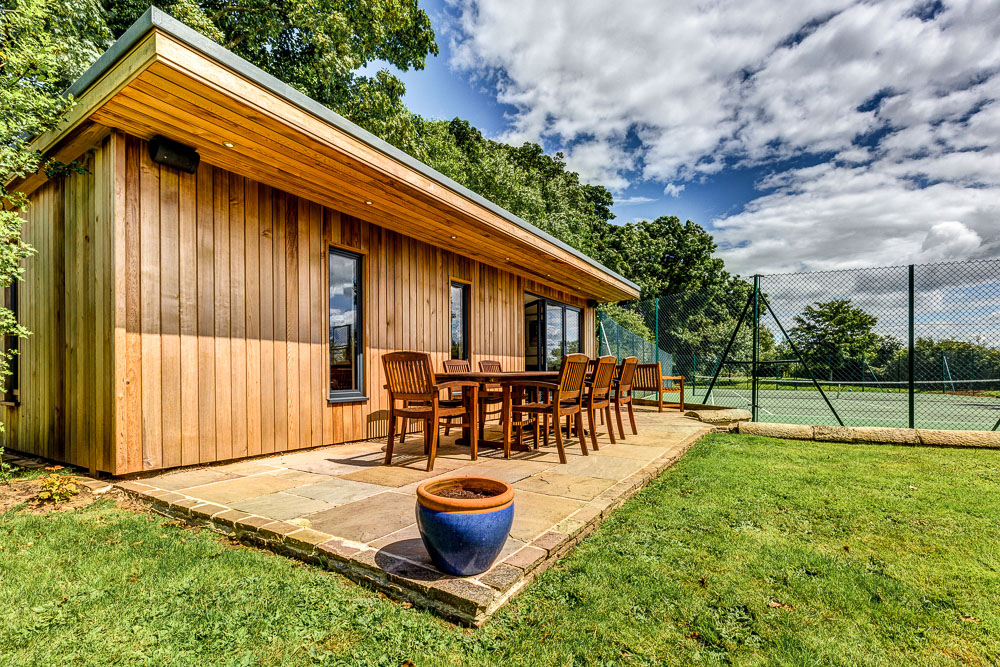Best Tips On Planning Permission For Garden Buildings
Best Tips On Planning Permission For Garden Buildings
Blog Article
What Planning Permission Do You Need For Gardens, Etc. In Terms Of Change Of Use?
Planning permission may be required for the construction of garden rooms, conservatories or outhouses. Here are the main aspects to be considered when it comes to planning permission related to change of use: Change from residential to non-residential Use
Planning permission is required in order to convert an unresidential building like a garage or agricultural building or a house into an office space or a residential space. This is due to a modification in the usage of the structure will be needed.
Garden Rooms for Living Accommodation
It is considered as a "change of usage" when you convert an existing garden into an additional dwelling, such as a guest house. It is necessary to obtain planning permission in order to make sure that the building is in compliance with the standards for residential use.
Utilization of Business
The planning permission might be needed if you intend to use your garden room or conservatory as an office space (e.g. an office space for small-scale businesses with frequent visitors or employess). The impact of the construction on the surrounding area, such as traffic, noise and parking, might need planning permission.
The use of this resource for education or community:
Planning permission is also needed to convert a garden structure into a space used for educational or community purposes (such as a room for meetings or a classroom). Local authorities will evaluate whether the property is suitable for use and what impact it may have on the area.
Impact on local infrastructure
In general, any alteration to use that affects the local infrastructure (such as roads, drainage or other public services) will require planning permission. The impacts of these changes will be assessed by the local planning authority in the course of the application process.
Dual Use
Planning permission might be needed for mixed-use property (such as one that is residential and commercial). This will help to define the different possibilities for the property.
More footfall, traffic and revenue:
The local planning authority has to be able to sanction the plan if it is likely to cause an increased footfall or increase in traffic.
Building Regulations Compliant:
Although it is not an issue of planning permission, any changes in the use of a space must be governed by construction regulations that address safety as well as health and energy efficiency requirements. This is especially important to convert spaces into living spaces.
Environmental Impact:
Modifications to the use of land that negatively impact the environment, like the conversion of agricultural land to residential use, will require planning approval. As part of your application, you could need to conduct an environmental study.
Impact of Community and Amenity:
It is important to take into account the impact the changes will have on the community facilities in the area, as well as the general character of the area. For instance, turning an old garden into a cafe would need approval from the planning department to ensure that it is in line with the community's plans and safeguards local amenities.
Designated Areas:
In designated zones (such as National Parks and Areas of Outstanding Natural Beauty), there are stricter regulations to ensure that the character of an area is maintained. In these cases, planning permission is required.
Local Planning Policies:
Local planning authorities can have policies that differ widely regarding changes in use. These policies are essential for understanding what changes require approval, and what requirements need to be fulfilled.
To summarize plan, approval for planning is usually needed for any significant change of use to conservatories in the garden, outhouses, garden offices, or extensions. This is to ensure that the proposed use is suitable for the location and is compatible with the local and national policies on planning. It also addresses the potential impact on the environment and community. Consulting with your local planning authority at the beginning of the planning process is essential to establish the precise requirements and to obtain the necessary approvals. View the top garden shed rooms for more examples including what size garden room without planning permission, insulated garden rooms, costco garden buildings, garden room planning permission, small garden office, garden room vs extension, outhouse building, outhouses, garden out house, garden room and more.
What Kind Of Planning Permission Is Needed For Gardens, Rooms, Etc. In Terms Of Listed Structures?
Certain considerations and rules are needed when building garden rooms, conservatories or outhouses on the property of a heritage-listed building. These are the most important factors to consider when planning permissions are required for these projects. The Building Consent for Listed Buildings
Alongside the need for planning permission, any alteration or extension within the boundaries of an historic building will require listed-building consent. Modifications could alter the characteristics of a listed building.
Impact on historical character:
Any new construction or extension that could alter the character or appearance of the historic building or the listed building or its surroundings, needs planning permission. This includes garden buildings and outbuildings.
Design and Materials:
The new structure and components must be consistent with the architectural and historical importance of the historic building. This may require bespoke designs and the usage of traditional materials which requires approval for planning.
Closeness to the Listed building:
It is essential to take into consideration the impacts of any new structures that are located near the heritage building. The character of the building won't be affected when planning permission is granted.
Size and Scale
The proposed garden room size or conservatory size extension scale should be in proportion with the listed building. The bigger structures will require more thorough analysis and planning approval.
Location of the property:
The position of the new structure (whether they are erected in front, on the side or the rear of a building) can impact the necessity for approval of the plan. Visible locations or those impacting key views of the building usually require more rigorous examination.
Changes in the internal structure:
Even if the new structure is demolished from the listed building, any changes made to the listed structure (such as creating new access points) are also subject to the listed building's consent as well as planning approval.
Conservation Area Overlap
Additional restrictions may apply Additional restrictions may apply if the listed structure falls within a conservation zone. It is necessary to obtain permission for planning in order to be in compliance with the regulations for both listed buildings and conservation areas.
The building's use:
Planning permission is usually needed in relation to the intended use that the garden room, or outbuildings, may have. The usage of an outbuilding or a garden area that implies a major alteration to the property, like a residential unit or commercial space, is subject to greater examination.
Structural Impact:
Any construction that might affect the structural integrity of the listed building requires permission for planning and listed building permission to ensure that the new and old structures are properly and properly integrated.
Local Authority Guidelines
Local authorities often have specific guidelines for listed buildings, which outline the types and extent of changes and construction which is allowed. Planning permission ensures that the guidelines are followed.
Professional Assessments
Conservation experts often conduct detailed assessments on proposals for the work to be carried out on listed buildings. These assessments will help to determine if the proposed activity is in line with the building's requirements and help with any applications for planning permission.
To summarize, planning consent and listed building approvals are almost always needed when building gardenrooms, conservatories outhouses, office buildings, or extensions with an approved building. Consult with your local heritage and planner prior to beginning the planning process to ensure that you are in compliance with all applicable regulations and to preserve the architectural and historical integrity of the building. Read the recommended how to supply electricity to a garden shed uk for site advice including Tring garden rooms, armoured cable for garden room, garden room planning permission, garden room, garden rooms in St Albans, gym outhouse, garden room planning permission, do i need planning permission for a garden room with toilet, ground screws vs concrete, garden out house and more.
Restrictions On Location: What Permits Are Required For Garden Rooms As Well As Other Structures?
If you are planning to build an outdoor space, a conservatory, outhouse, garden office, or extension The restrictions on the area will determine if planning permission is necessary. Here are key location criteria to take into consideration.
Any building within 2 meters of the boundaries must not exceed a maximum height of 2.5 meters. If this height is exceeded then planning permission must be sought.
Front of the property
The construction of structures on the main elevation of the house (the front-facing side) generally require permission from the planning department, since permitted development rights do not generally allow for forward extensions or buildings.
The side of the property:
Side extensions must be in line with particular height and size limitations and usually require permission for planning if they extend beyond the existing side wall of the home.
The rear of the property:
Height and size restrictions are applicable to garden rooms and rear extensions that are located behind the house. Planning permission might be required when the garden or extension rooms exceed the allowed development boundaries.
Designated Areas
More stringent controls are in place for conservation areas, Areas of Outstanding Natural Beauty, National Parks and World Heritage Sites. Any new structure regardless of its size may require planning permission.
List Buildings
Properties that are listed as a building has strict regulations. Any new building or alteration requires planning approval and approval of listed buildings, regardless its place of construction.
Green Belt Land:
The creation of green belts is prohibited in order to safeguard open spaces. A special permission is often needed for any new construction or major alterations.
Zones of risk for flooding:
The new structure must not increase flooding risks in the event that the property is located in a flood risk zone. A flood risk assessment and planning permission might be required.
Urban vs. Rural Settings
Urban areas typically have different regulations compared to rural areas. For instance, rural properties may have fewer restrictions on the size and placement of outbuildings, but this varies widely.
Highways and Public Rights of Way
If the structure is situated near roads, highways, or public right-of-ways, planning approval may be required to stop the structure from hindering the view, safety, or accessibility.
Shared ownership or leasehold land:
If you own a home which is leasehold or a part of a shared ownership scheme it is possible to seek additional permission from the property owner or managing entity. It is also possible to require permission to plan your property based on the local laws.
Contiguous to other structures
If the structure being built is being constructed next to existing buildings or structures especially those located on adjacent properties, planning permission may be needed to ensure the structure does not have a negative impact on neighboring buildings or the land.
It is always recommended to speak with your local planning authority to receive specific guidance specific to the location of your home and the specifics of your situation. Local laws can influence laws, which is why it's essential to be sure that you are in compliance with all restrictions. View the top rated wiring for garden for blog advice including garden room planning permission, garden rooms in St Albans, small garden office, ground screws vs concrete, garden room planning permission, Tring garden rooms, garden rooms in St Albans, outhouse garden, how to lay decking on soil, herts garden rooms and more.